-
Underwater nuke detecting drone
Unmanned underwater vehicles (UUV) could soon be prowling the nation’s coastline to detect radiological and nuclear threats; the underwater drones, developed by New Jersey based Princeton Security Technologies, Inc., are equipped with radiological isotope identification hardware to monitor any changes below the water
-
-
ASIS Conference: Securing the global supply chain
At the upcoming annual ASIS International security conference, attendees will have the opportunity to learn more about protecting the global supply chain at one of the many educational sessions; officials fear that a terrorist attack on a seaport could cripple a local economy and have global repercussions. As nearly 90 percent of the world’s goods are still shipped via containers on massive transport ships
-
-
U.S. no longer mandating 100 percent screening of cargo containers
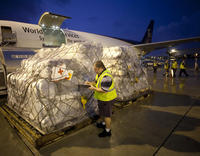
DHS Secretary Janet Napolitano announced that the United States is no longer going to screen every cargo container before it enters the United States; she said, “We believe the so-called 100 percent requirement is probably not the best way to go”; in 2007 Congress mandated that all containers entering the United States must be scanned at their ports of exit by 2012; the 2007 bill empowers DHS to extend the 2012 deadline if the agency believed that the goal was not achievable and in the past Napolitano has expressed doubts about the feasibility of screening 100 percent of the cargo entering the United States
-
-
New Coast Guard vessel exceeds expectations in rough Alaskan waters
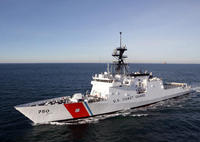
The U.S. Coast Guard’s new line of flagship vessels, the National Security Cutter (NSC), has proven invaluable to the agency’s mission since its deployment in 2009; the vessels’ capabilities reflect the additional responsibilities that the Coast Guard has shouldered since the 9/11 attacks; the new Legend Class National Security Cutters come as the replacement for the Coast Guard’s aging Hamilton Class High Endurance Cutters that have been in operation since the 1950
-
-
Bomb sniffing dogs deployed to Long Island ferry
A New York ferry company has become the first in the United States to receive federal grants to pay for the deployment of explosive detection canine teams; the Bridgeport & Port Jefferson Steamboat Company is teaming up with Long Island K-9 service to use bomb sniffing dogs to detect any explosives aboard the ferries; the canine teams will inspect every car that enters the ferry; teams were initially deployed on 13 May and the contract will last for three years
-
-
CBP Announces New Small Vessel Reporting System

U.S. Customs and Border Protection the other day announced the availability of the Small Vessel Reporting System along the northern border and in Florida, Puerto Rico, and the U.S. Virgin Islands; the system is voluntary, and — as is the case with the air travel’s Trusted Traveler program — it aims to provides expedited entry procedures to trusted boaters; the system is open to all U.S. citizens and permanent residents, as well as Canadian citizens
-
-
"See Something, Say Something" campaign hits Seattle ferry system
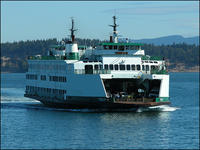
Last week, a senior DHS official examined security measures at the nation’s largest ferry system; Betsy Markey, DHS’s assistant secretary of intergovernmental affairs, rode aboard a ferry last Thursday in Seattle as it sailed from Colman Dock to Bainbridge Island; Markey’s visit comes as a part of a broader DHS push to promote its “If You See Something, Say Something” public awareness campaign; the campaign will be implemented in conjunction with the Washington State Ferries (WSF) system; WSF is the largest and most complex ferry system in the United States with its twenty terminals and nine routes
-
-
Ships increasingly turning to armed guards to combat piracy
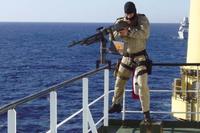
To stem the rapidly growing number of pirate attacks in the Indian Ocean, more shipping companies are turning to armed guards; last year attacks off the Somali coast hit an all-time high with forty-nine ships hijacked along with 1,016 crew members; to combat the growing threat of piracy an estimated 20 percent of ships operating in the Indian Ocean and the Gulf of Aden will hire armed guards within the next eighteen months, up from 12 percent; analysts say no ships have been successfully hijacked when armed guards were present
-
-
New anti-piracy tool: 1,000-participant Internet wargame
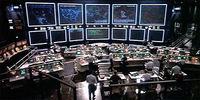
The U.S. Navy is recruiting a community of more than 1,000 players from across the U.S. government to collaborate on solving real-world problems facing the U.S. Navy: high-seas piracy; the participants will be asked to suggest ways to combating piracy off the coast of Somalia
-
-
British insurance firm building its own anti-pirate armada
With pirate attacks hitting all-time highs, a British insurance firm is creating its own fleet of gunships to help prevent these costly disruptions; in the first quarter of 2011 pirate attacks reached record highs with 142 incidents occurring; to combat this growing threat, Jardine Lloyd Thompson, which insures roughly 15 percent of the world’s maritime cargo ships, is launching its Convoy Escort Program (CEP), which consists of a fleet of eighteen gunboats; so far no country has agreed to allow the private firm to carry out its plans and it lacks the ability to operate legally; the firm has already raised all the funds necessary and could be ready to begin escorting ships as early as this year
-
-
Anti high-seas piracy coalition launches public campaign
“2,000 Somali pirates are hijacking the world’s economy” — this is the motto of a new coalition of maritime transportation organization which has launched a public campaign to encourage governments to take more active measures to tackle high-seas piracy; the Save Our Seafarers campaign has a Web site and will take out ads in leading world newspapers
-
-
Authors suggest ways to alleviate L.A. cargo port "constipation"
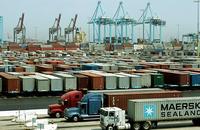
In January, the port of Los Angeles received more than 330,000 containers; the possibility that one of those 330,000 containers could have contained a dirty bomb, or worse, keeps security experts up at night; experts say that to ensure security and prevent logjams, the best approach to container security would be to replace the current system, which singles out only those containers whose documentation raises questions, with a system which will see terminal operators X-ray every container, regardless of its eventual destination; only those containers flagged during the low-level scan would be subjected to a more thorough search
-
-
NYPD's combat vessel will thwart Mumbai-like attacks
To prevent a Mumbai-like attack in New York, the NYPD will be getting a high-speed combat vessel; the 71-foot craft, which can hit speeds of 40 knots and will be able to carry up to thirty police officers fully armed with heavy weapons; the high-speed boat will be outfitted with radiation detection equipment and infrared cameras, as well as a satellite communication facilities
-
-
New radar improves pirate threat detection
New maritime radar helps protects ships again pirates; the radar is effective in detecting small targets, especially in high levels of rain and sea clutter, and it automatically alerts watch keepers about craft displaying hostile behavior patterns
-
-
Securing America's ports
Each year roughly $3 trillion worth of goods enters into the United States via water and more than 90 percent of the world’s cargo travels by sea making ports a prime target for terrorist organizations; it was not until the after 9/11 that port security became a top priority; the Port of Long Beach handles 40 to 45 percent of all the goods that enter the United States; to secure the 3,200 acre Port of Long Beach, the port has added a sophisticated series of security measures in recent years; a senior official from the Port of Long Beach will be speaking at a panel at the upcoming ISC West Conference to discuss port security strategy and interagency coordination
-
- All
- Regional
- Water
- Biometrics
- Borders/Immig
- Business
- Cybersecurity
- Detection
- Disasters
- Government
- Infrastructure
- International
- Public health
- Public Safety
- Communication interoperabillity
- Emergency services
- Emergency medical services
- Fire
- First response
- IEDs
- Law Enforcement
- Law Enforcement Technology
- Military technology
- Nonlethal weapons
- Nuclear weapons
- Personal protection equipment
- Police
- Notification /alert systems
- Situational awareness
- Weapons systems
- Sci-Tech
- Sector Reports
- Surveillance
- Transportation
Advertising & Marketing: advertise@newswirepubs.com
Editorial: editor@newswirepubs.com
General: info@newswirepubs.com
2010-2011 © News Wire Publications, LLC News Wire Publications, LLC
220 Old Country Road | Suite 200 | Mineola | New York | 11501
Permissions and Policies
Editorial: editor@newswirepubs.com
General: info@newswirepubs.com
2010-2011 © News Wire Publications, LLC News Wire Publications, LLC
220 Old Country Road | Suite 200 | Mineola | New York | 11501
Permissions and Policies
